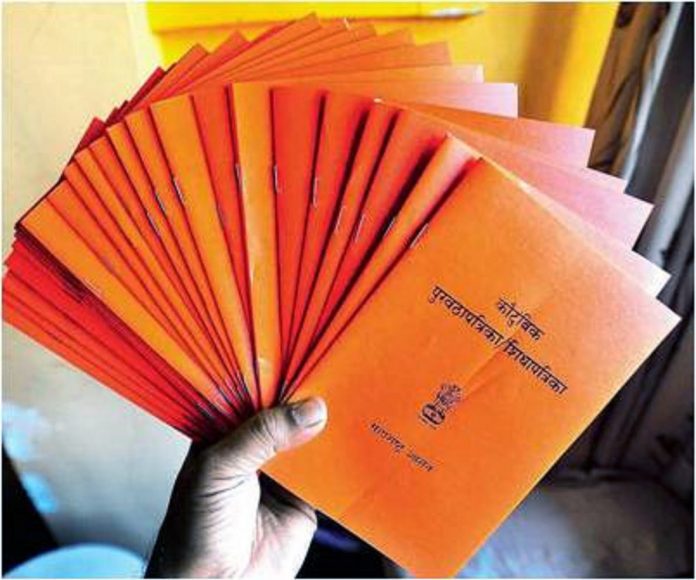There are many types of ration cards. The state government categorizes people for these and issues different ration cards according to the categories. The National Food and Security Act (NFSA) was passed in 2013 to provide people with a certain quantity and quality of food at affordable prices. NFSA provides two types of ration cards for all the states of the country, which are issued by the state governments. There are two types of ration cards under NFSA:
Antyodaya Anna Yojana (AAY): This type of ration card is given to the poor families identified by the state governments. This card is issued to those who do not have a stable income. Unemployed people, women and old people fall in this category. These cardholders are eligible to receive 35 kg of food grains per month per family. They get food grains at a subsidized price of three rupees for rice, two rupees for wheat and one rupee for coarse cereals.
Priority Household (PHH): The families not covered under AAY come under PHH. State governments identify priority household households under the Targeted Public Distribution System (TPDS) according to their specific, inclusive guidelines. PHH card holders get 5 kg of food grains per person per month. These cardholders get rice grains at a discounted price of Rs 3, wheat at Rs 2 and coarse grains at Rs 1.
Ration cards covered under TPDS: Before the introduction of NFSA, state governments issued ration cards under TPDS. After passing NFSA, states started issuing ration cards under it (which is mentioned above). The state governments which have not yet implemented the NFSA system still follow the old ration cards issued by them under TPDS. These are as follows-
1- Below Poverty Line (BPL): BPL cardholders are living below the poverty line specified by the state government. Such families get 10 kg to 20 kg of food grains per family per month at 50% of the economic cost. The discounted end retail price for specified quantities of wheat, rice, sugar and other items varies from state to state.
2- Above Poverty Line (APL): The families who have this card are considered to be living above the poverty line specified by the state government. APL families get 10 kg to 20 kg food grains per family per month at 100% of the economic cost. Every state government fixes subsidized retail rates for a certain quantity for rice, wheat, sugar and kerosene.
3- Annapoorna Yojana (AY): These ration cards are given to the elderly who are poor and above 65 years of age. Under this card, cardholders get 10 kg of food grains every month. The state governments issue these cards to those elderly people who are covered under this scheme as specified by them.


